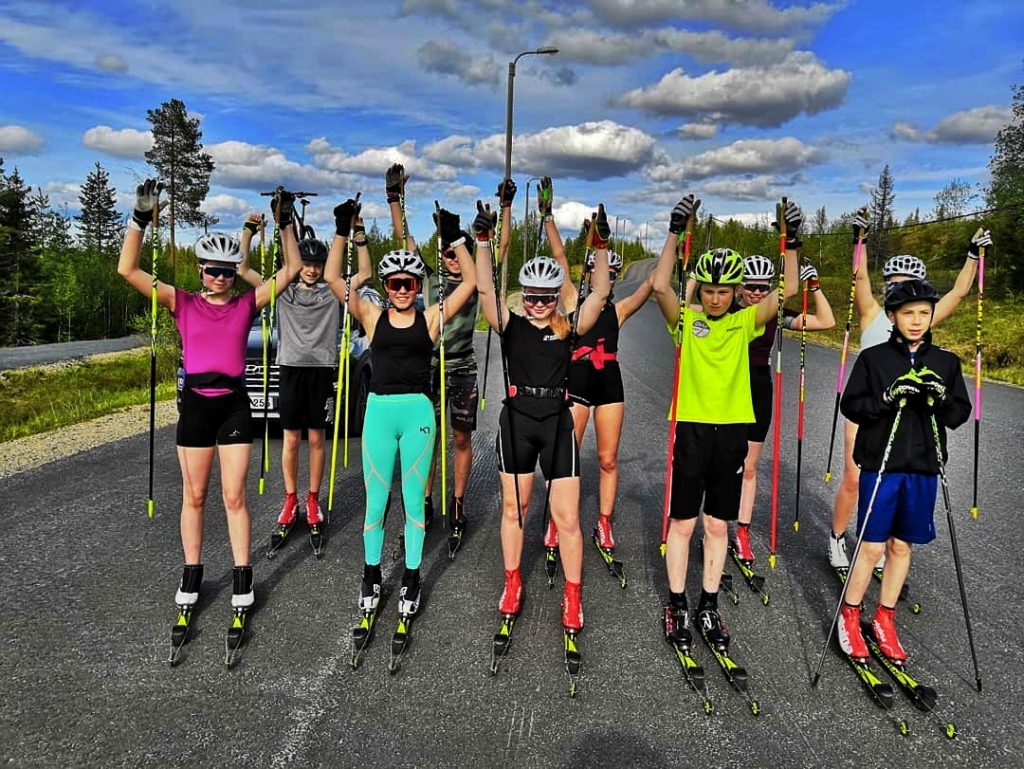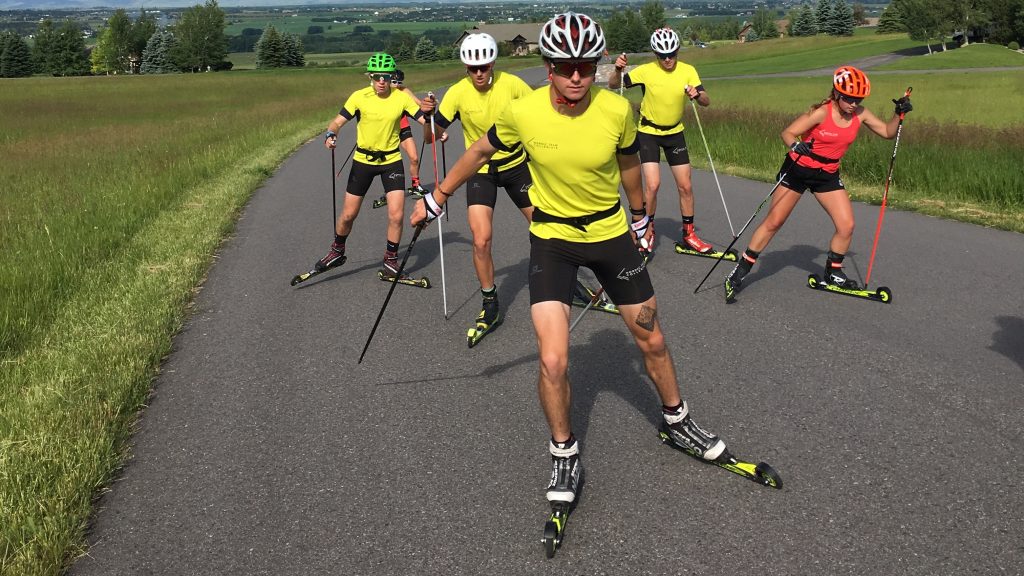ALWAYS TAKE CARE OF ROAD SAFETY WHILE ROLLER SKIING!
According to the most of national General Road Traffic Legislations, a roller skier is considered a pedestrian. The pedestrian’s place is on non-motorised traffic routes and ways according to the law. With the correct attitude and a will to concord with other road commuters will hopefully facilitate smoothly running, safe and most enjoyable roller ski training
On roads where such routes are not available, the roller skier must traverse in the same direction as the motorised traffic. Normally, walking by the roadside is considered to be safe. The situation would be different when the speed of the pedestrian would be double or even faster when compared to the typical traveling speed of other road users.
This will be the case with roller skiers, the standard roadside shoulder width of 15 centimeters is not enough for a roller skiing athlete. If the athlete is skiing skating style, the situation is even “worse”. Then the roller skier is a danger for themselves and the other possible road users. Because of this, always open-mindedly seek for ways to improve road and the roller skier’s own safety
Pavements – Respect the pedestrians
It goes without saying that normal pavements are not the correct place to even attempt to roller ski or rollerblading! Using the pavement should be always restricted to traversing from one passageway to another, or just when leaving from your home’s doorstep. As a thumb rule, the skis should always be carried, and not skied on in these circumstances.
On light traffic roads
The light traffic lanes are particularly challenging in urban areas. Roller skiers must adjust their pace to the other, and quite often slower traffic. Children, slowly moving elderly people, dog walkers and pedestrians, people embarking and disembarking from buses have the right to traverse on the fairways without the risk of collisions caused by skiers.
After all, skating style skiing requires a lot of room for the skier’s poles swinging backward and sideways. The roller skier must choose such a training site where other possible traffic is not very busy and where it is possible to dodge and set one’s pace according to other traffic. On light traffic routes in LHT countries, this means staying on the right-hand side of the route and passing others moving in the same direction from the left side. (And vice versa in RHT countries)

Intersections of light traffic and driveways have been generally identified as risk areas for light traffic. for pedestrians and cyclists. Such places are also hasardous for a skier who is not even normally capable to slow down or perform a quick stop.
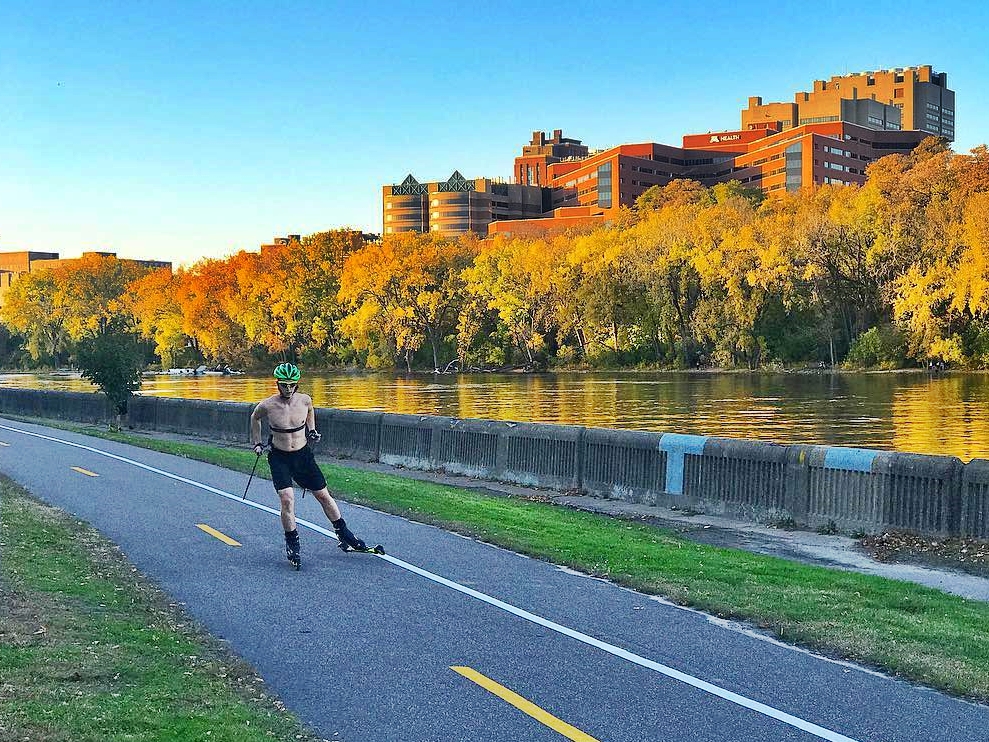
Driveways and roadsides
On driveways, roller skiing should take place on the left side of the road in LHT countries along the hard shoulder. In countries with RHT traffic, the rule is to roller ski on the right-hand side of the road, Sometimes even wider shoulders are not wide enough for roller skiing. Therefore, skiing should take place during such times when there is as little other road traffic as it is possible. Please choose such a time of day when other traffic on the road is minimal!
If you are roller skiing on the roadside in the opposite direction for oncoming traffic, make sure you will never compromise your own safety and that of others! Ensure that you can see what is happening in front of you well in advance to and you can dodge the oncoming traffic. When skiing uphill, make sure you stay on the side of the road and not to the surprise the oncoming traffic from the opposite direction so that they can be forced and unprepared to cross the center line in front of oncoming traffic from the other direction.
Particular attention must be paid by roadside roller skiers at points where the yellow centreline must not be crossed by oncoming traffic In addition to ensuring their own visibility, the skier should take the utmost care of being seen by other commuters.
Bright coloured and reflective accessories are a great way to do this, especially during twilight, fog, and other visibility limiting circumstance. To secure this, both the ski poles and the ski clothing must include clean and functioning safety reflectors. The safety reflectors should be located below the knee area and on the upper body parts to ensure that the oncoming commuter will recognise the skier well in advance, and even whilst driving with high-beam lights on.
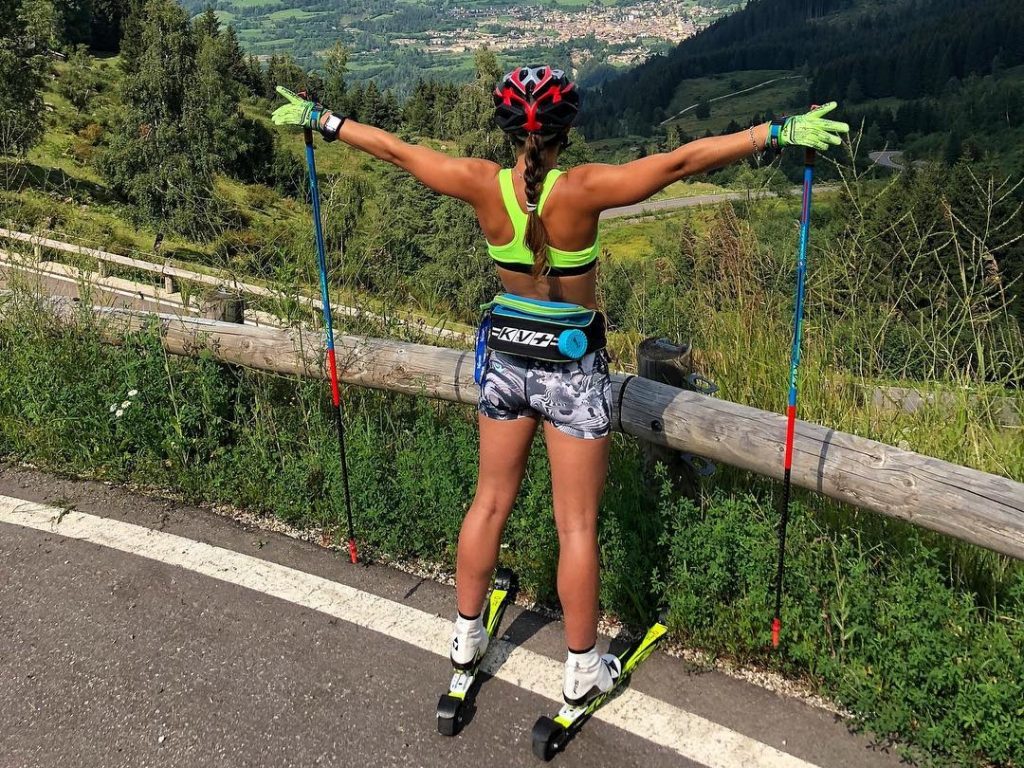
Rather wear more safety reflectors than is your countries norm.
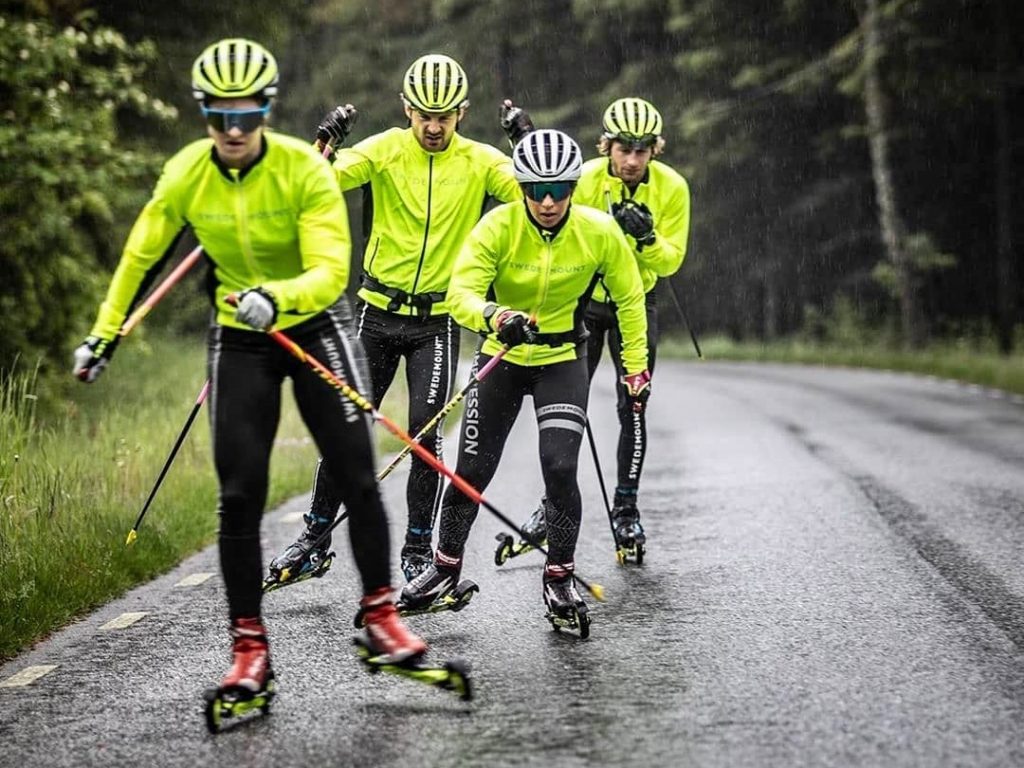
When roller skiing, cyclists should be specially taken into account and give them a safe area to commute, on the fairway as well as the driveway. Also, cyclists commuting in the oncoming direction must be given a chance to pass the skier without interference.
Conclusive summary
A roller skiing commuter has a lot of responsibilities. The skier should ensure enough visibility both in front and behind of them and still simultaneously try to anticipate traffic possibly coming from the left and right side – Just like driving a car or a motorbike!
With the right attitude and a want to concord and respect other commuters on the road will hopefully facilitate smoothly running, safe, and most enjoyable roller ski training!
